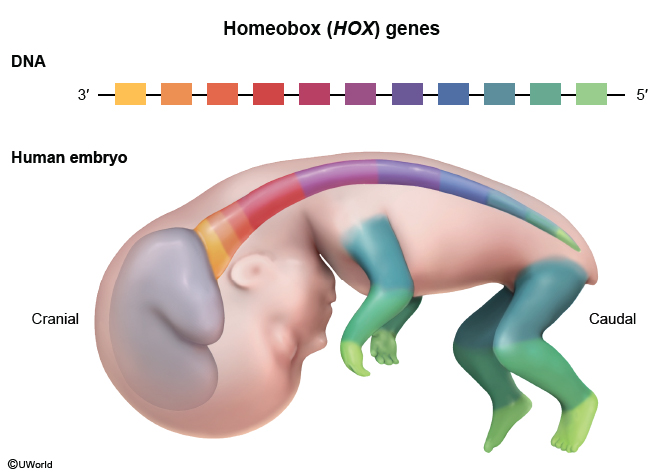Limb Development Disorders
Article Sections
Introduction
Limb development is a highly coordinated process involving the precise expression (both in time and location) of various signaling factors that are regulated by certain genes, including homeobox (HOX) genes. Disruptions in this process can result in limb development disorders that range in severity and presentation.
Normal limb growth and development
At the end of week 4 of gestation, the upper and lower limb buds form from the ventrolateral wall of the embryo. Each limb bud contains a core of mesenchymal cells that is covered by ectoderm. The mesenchymal cells give rise to bones, tendons, and other connective tissues, and the ectoderm gives rise to skin. In addition, cells from segments of adjacent mesoderm (ie, somites) migrate to the limb buds and form muscles. These basic structures (eg, bones, muscles, skin) are established by the end of week 8 of gestation.
Continue Learning with UWorld
Get the full Limb Development Disorders article plus rich visuals, real-world cases, and in-depth insights from medical experts, all available through the UWorld Medical Library.
Figures
